# Build an HTTP action
You can use the HTTP connector to configure custom HTTP actions.
Before you begin, ensure your HTTP connection is set up properly.
# Send request via HTTP
The Send request via HTTP action enables you to send an HTTP request to an API endpoint.
Begin by entering a name for your request in the Request name field. This updates the action name at the recipe-level.
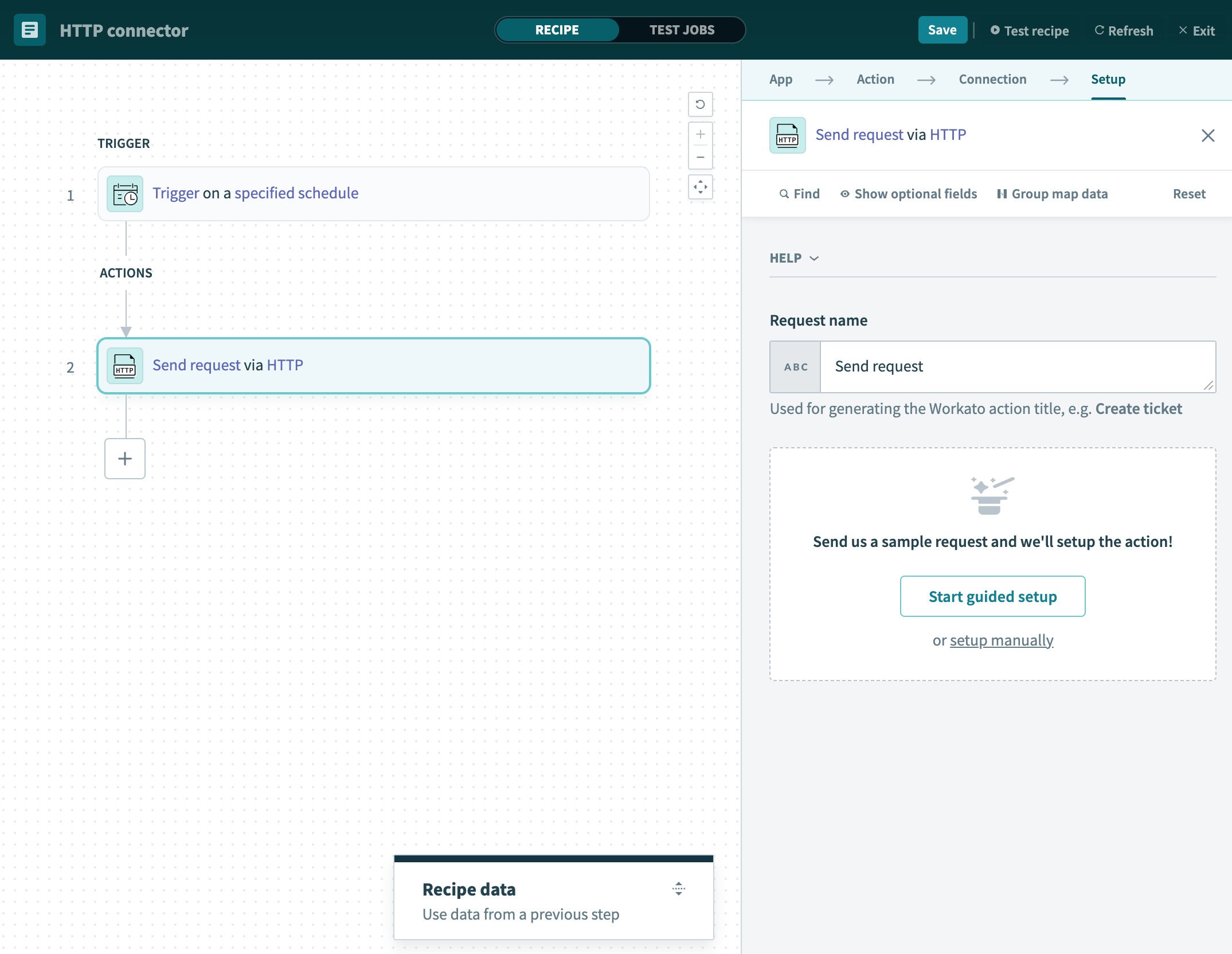 Provide request name
Provide request name
You can choose to configure your action using the HTTP wizard by clicking Start guided setup or configure it manually by clicking setup manually.
IMPLICIT RETRY
This action attempts an implicit retry when a request times out during GET, PUT, or DELETE operations. This addresses transient network issues by automatically reattempting the request.
# Input fields
SENSITIVE DATA
Don't hard-code sensitive information, such as tokens, usernames or passwords, or client IDs/secrets, into input fields for this action. Instead, store them in your connection, or use a secrets manager).
Workato supports the following secrets managers:
Refer to the Security best practices documentation for more information.
| Input field | Description |
|---|---|
| Request name | Provide a human readable description of what this API request does. |
| Request | Contains information related to the request, including the Method, Request URL, Request payload, and headers. |
| Response | Contains information related to the response, including the Response type, encoding, and headers. |
# Output fields
The output of this HTTP action depends on the Response body schema defined in your HTTP configuration.
# Build your action with the Workato HTTP wizard
The Workato HTTP wizard streamlines the process of setting up HTTP actions by guiding you through each configuration step.
In many situations, the wizard automatically provides a recommended HTTP configuration tailored to your endpoint, eliminating the need for manual setup. It also allows you to test the connection directly within the wizard, ensuring the endpoint responds as expected before finalizing the action.
This example uses the Workato HTTP wizard to create an action named Get incidents in ServiceNow.
# Provide the HTTP method and request URL
Complete the following steps to specify the HTTP method and request URL for the API in this HTTP action:
Click Start guided setup to open the HTTP wizard.
EXITING THE SETUP WIZARD
You can exit the setup wizard by clicking Skip guided setup to configure the action manually at any time during this process. Similarly, if you decide to set up the action manually, you can choose to use the HTTP wizard by clicking Resume guided setup.
Use the Method drop-down menu to select the HTTP method of the API endpoint you plan to call. This example uses GET.
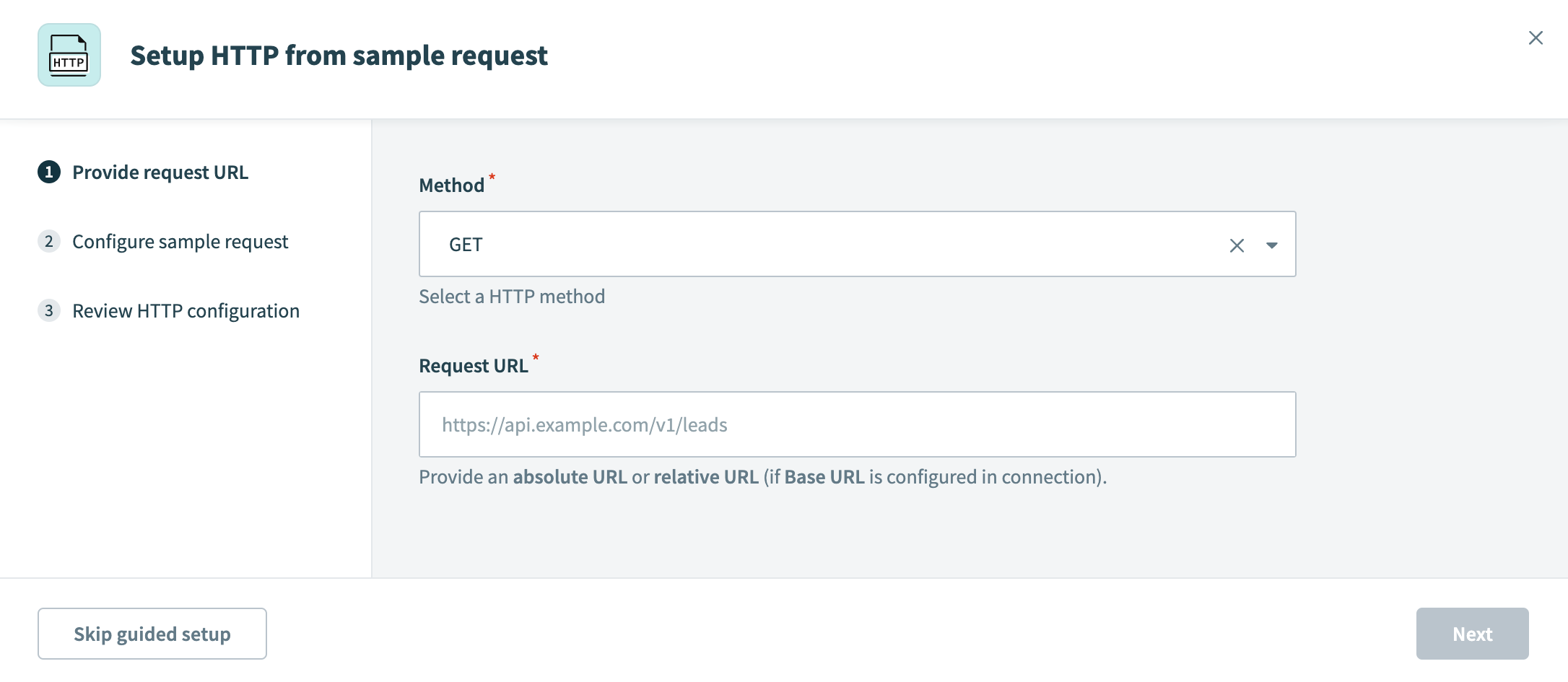 Provide an HTTP method and request URL
Provide an HTTP method and request URL
Enter the absolute URL of the API endpoint in the Request URL field.
Alternatively, if you configured the base URL in the connection setup, enter the relative URL in this field. For example, if the base URL is https://api.example.com/ and the absolute URL is https://api.example.com/users/123, your relative URL is users/123.
In this example, we plan to view existing incident records from ServiceNow. According to the ServiceNow documentation (opens new window), this is a GET call with the following endpoint:
https://<instance>.service-now.com/api/now/v1/table/incident
Replace <instance> in the URL with the specific name of your ServiceNow instance.
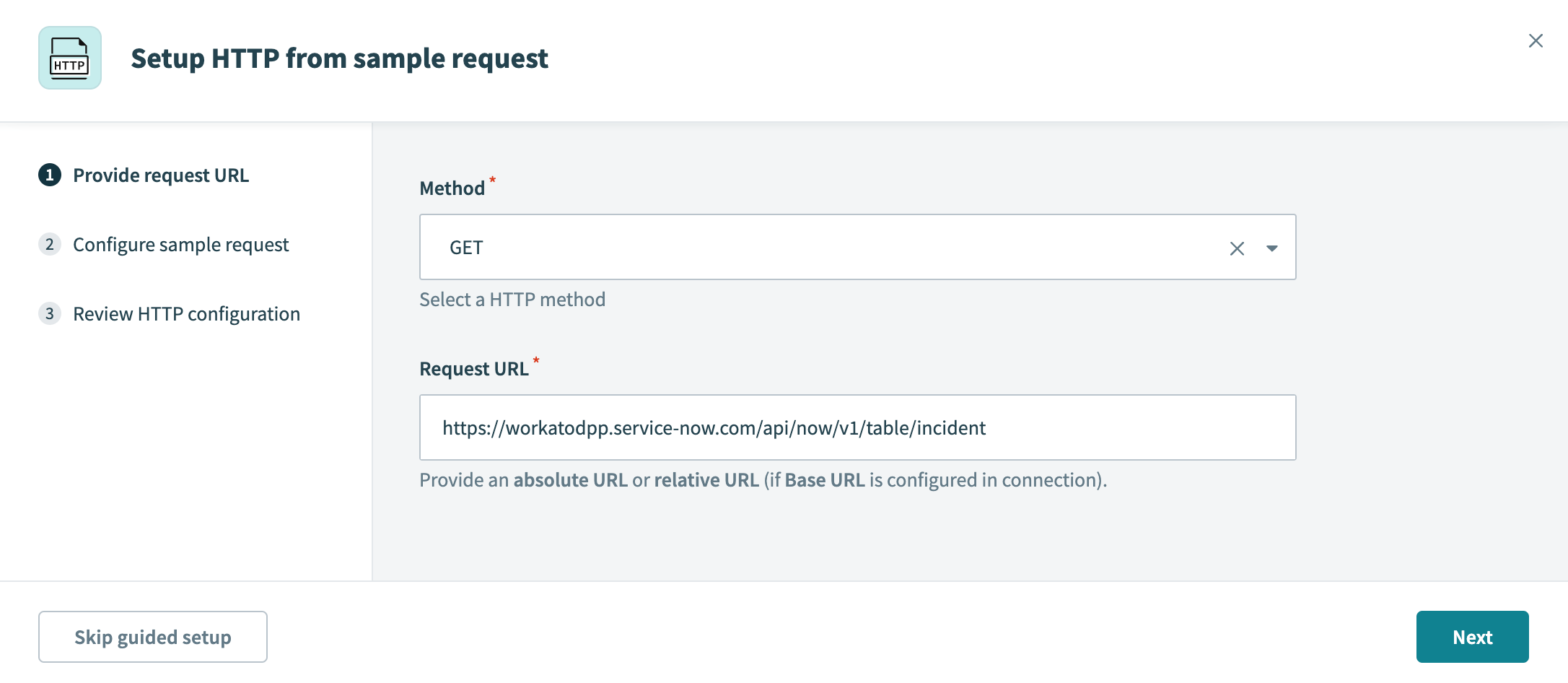 Configuring HTTP method and request URL
Configuring HTTP method and request URL
Click Next.
# Configure and send the sample request
For certain endpoints, Workato provides a sample request that you can use as-is, customize, or remove to build your own manually.
Configure the sample request using one of the following options:
- Use Workato's recommended request settings without modification.
- Customize Workato's recommended request settings to meet your requirements.
- Remove Workato's recommended request settings and build the request manually.
AWS HTTP
When using AWS authentication methods such as Access key or IAM role auth, you don't need to append any additional authentication parameters. In AWS documentation, these are often denoted as AUTHPARAMS.
# Review the HTTP configuration
A successful request confirms the following:
- The connection is set up successfully.
- The API endpoint is correct.
- All required request body fields are included and contain valid values.
Click Apply configuration to apply the request and response configuration to the Workato HTTP action.
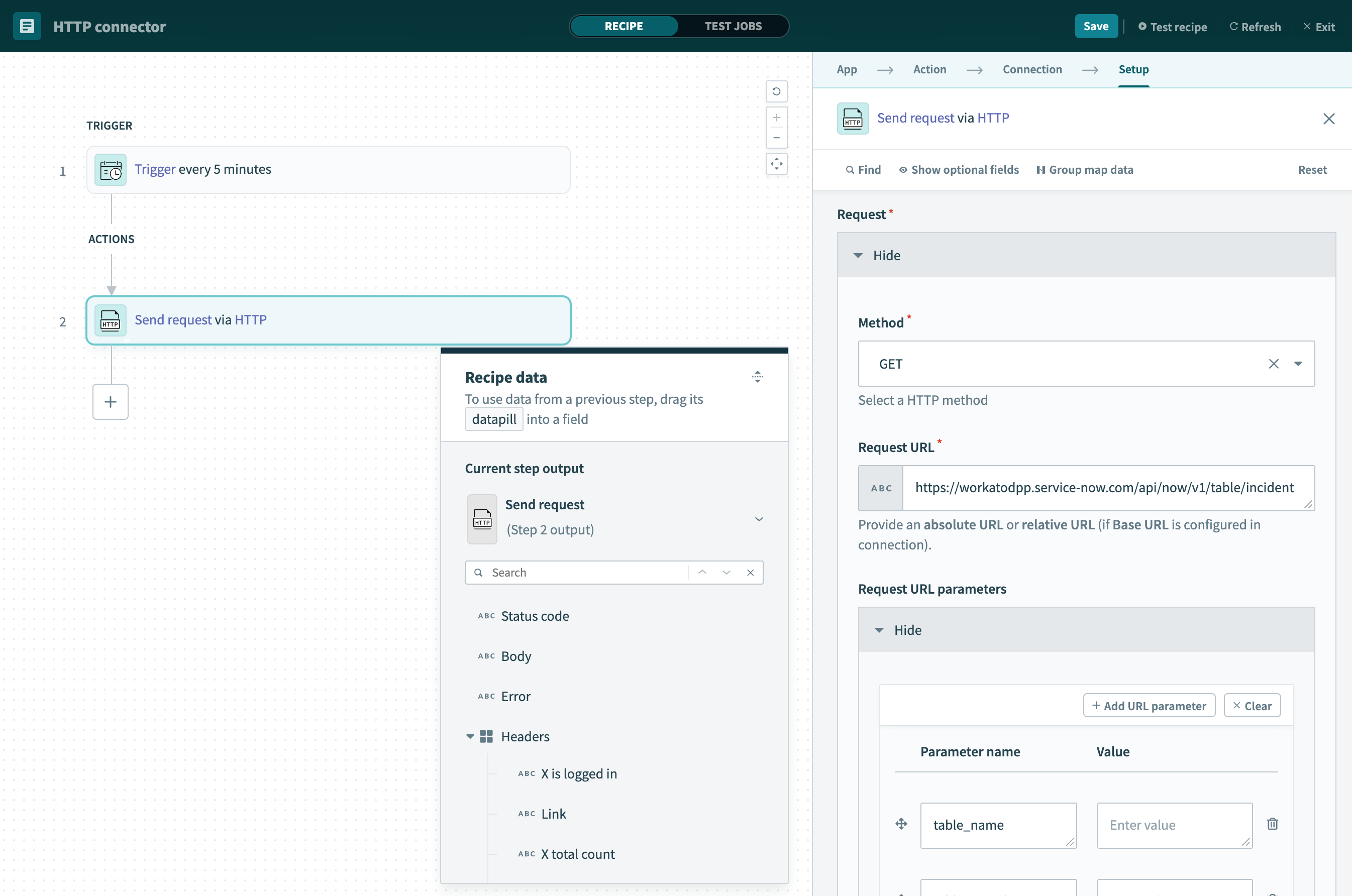 Configuration applied for HTTP action
Configuration applied for HTTP action
# Finalize the HTTP configuration
After verifying that the configuration works, you can either map datapills to the Value column next to their corresponding parameters or manually enter fixed values into these fields.
# Schematic vs. raw JSON request body
When you choose the JSON request body option in the Request content type input field, Workato will generate an input schema based on the sample JSON provided. This allows each field to be configured individually. It also allows you to leverage formula mode to manipulate the field's value. For example, you may use ternary operator and/or skip to conditional include or omit a field.
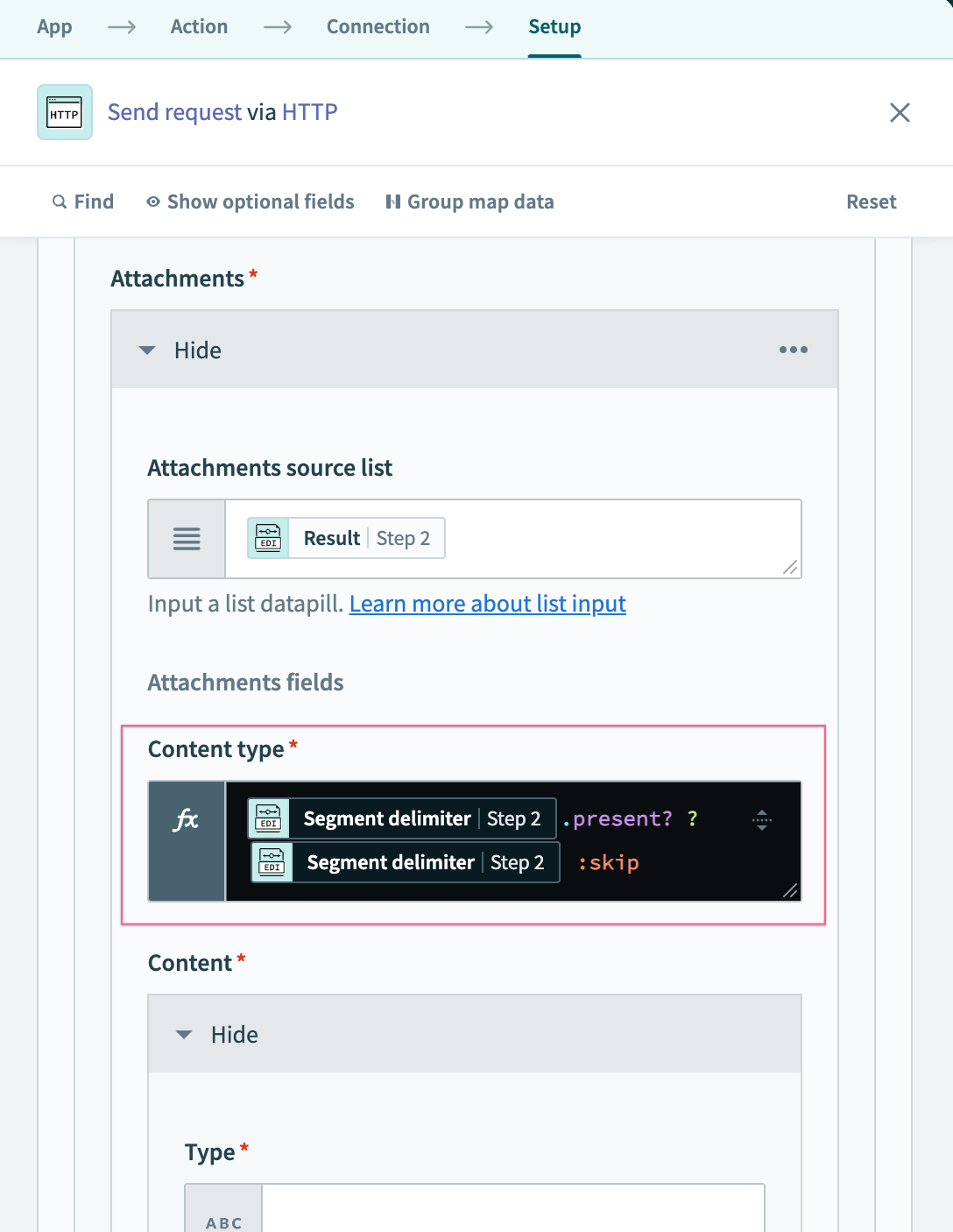 Using formula mode to manipulate input field value
Using formula mode to manipulate input field value
However, you may want to fully customize the message formatting. In this case, you may choose Raw JSON request body instead, which allows you to input and manipulate the JSON payload structure directly as is.
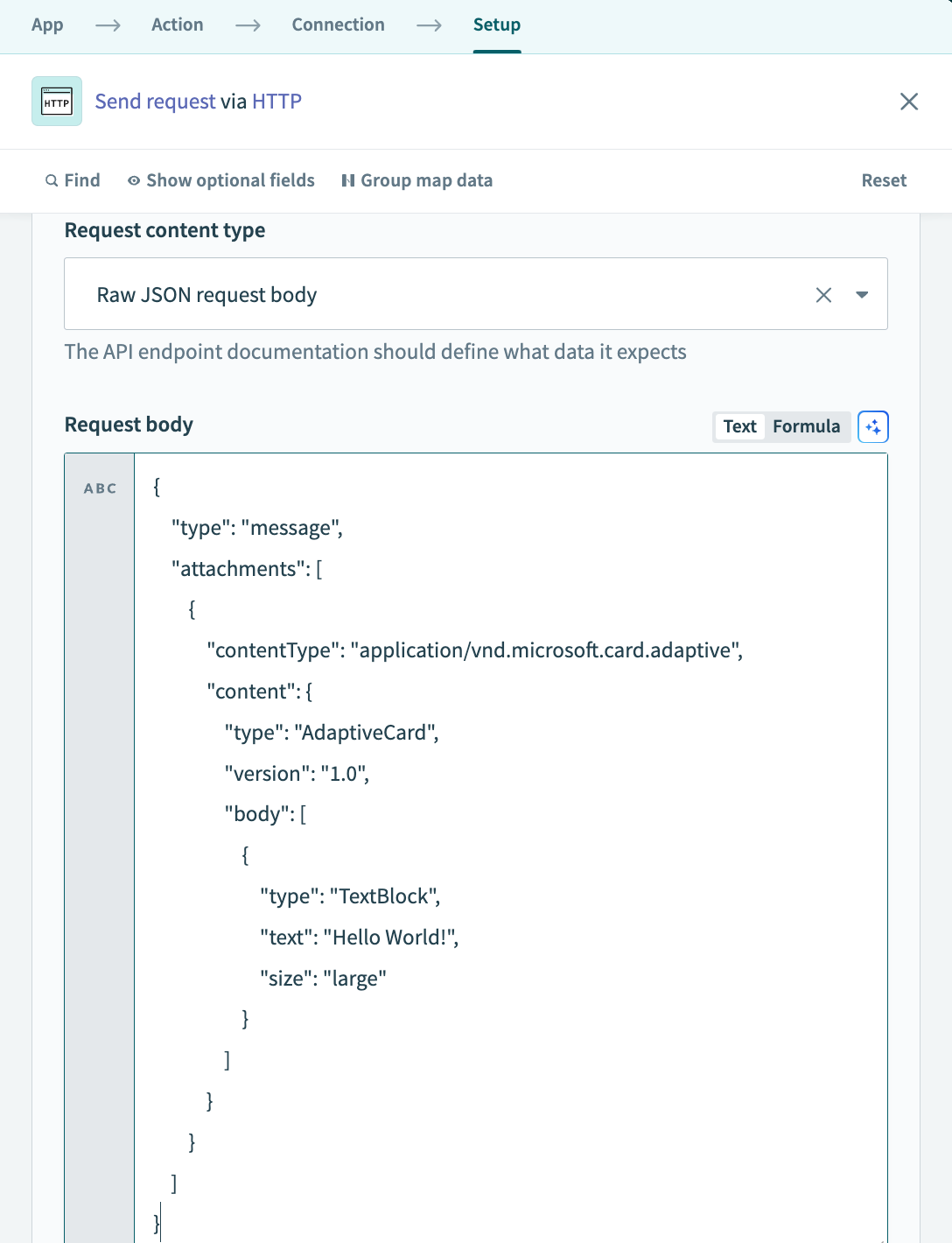 Raw JSON request body
Raw JSON request body
# Configure multipart requests
The Send request via HTTP action supports sending multiple files in a single request payload.
Complete the following steps to configure a multipart request:
Enter a name in the Request name field.
Click setup manually.
Locate the Request field, and from the Method drop-down menu, select one of the following methods that support multipart form requests:
- POST
- PUT
- PATCH
Enter the absolute URL of the API endpoint in the Request URL field. Alternatively, if you configured the base URL in the connection setup, enter the relative URL in this field. For example, if the base URL is https://api.example.com/ and the absolute URL is https://api.example.com/users/123, your relative URL is users/123.
Use the Request content type drop-down menu to select Multipart form. This enables the HTTP connector to package and send each file and data field as separate parts in the request, allowing the API to interpret them correctly.
In the Request body schema field, click add fields manually to open the Add new field dialog.
Enter a name for your field in the Name field. For example, File1.
Use the File attachment drop-down menu to select Yes.
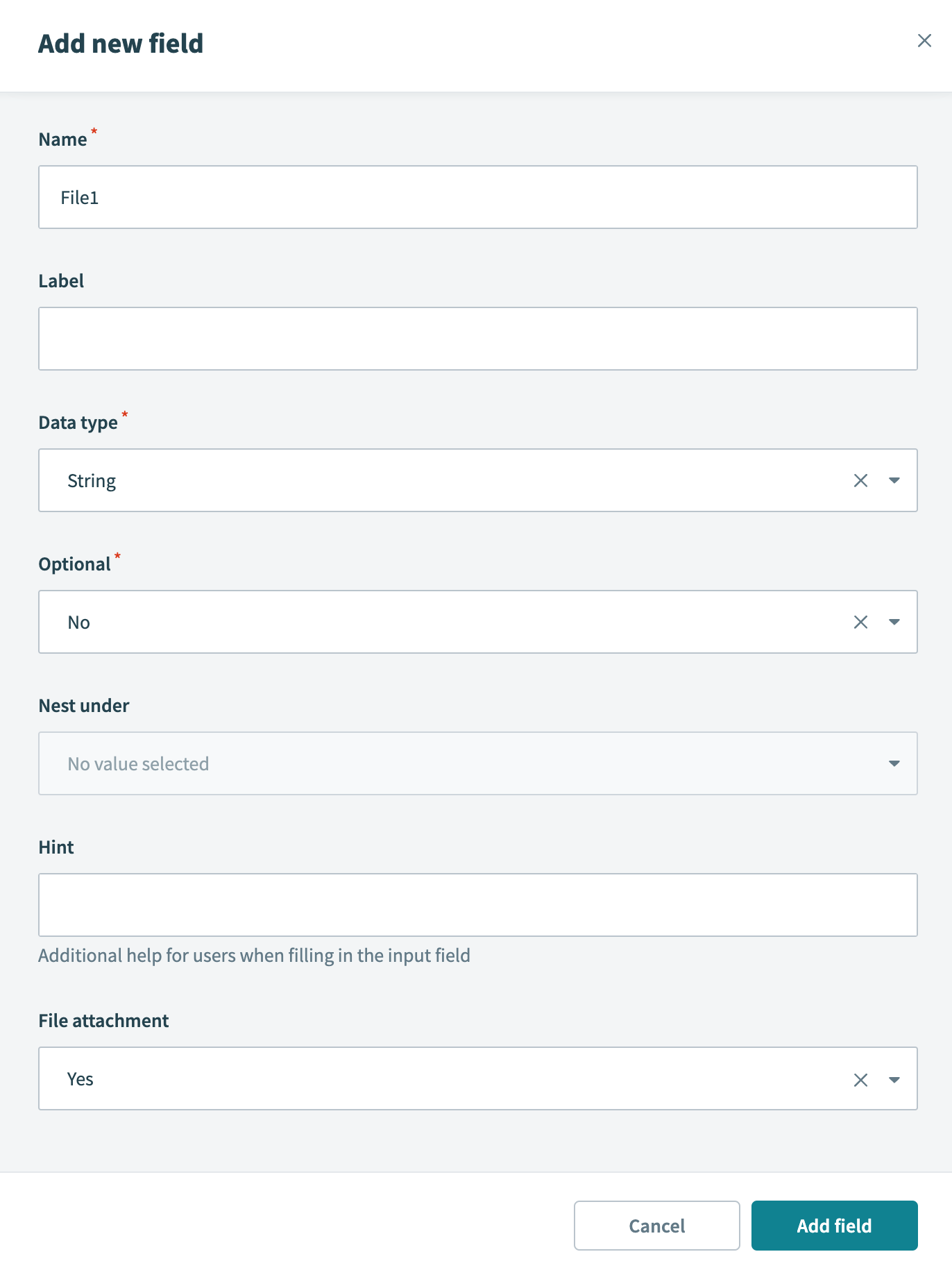 Add request body field
Add request body field
Click Add field. This adds a "header" exclusive to the element that you can use.
For situations where you need multiple headers in a multipart request, you can use this element without attaching a file.
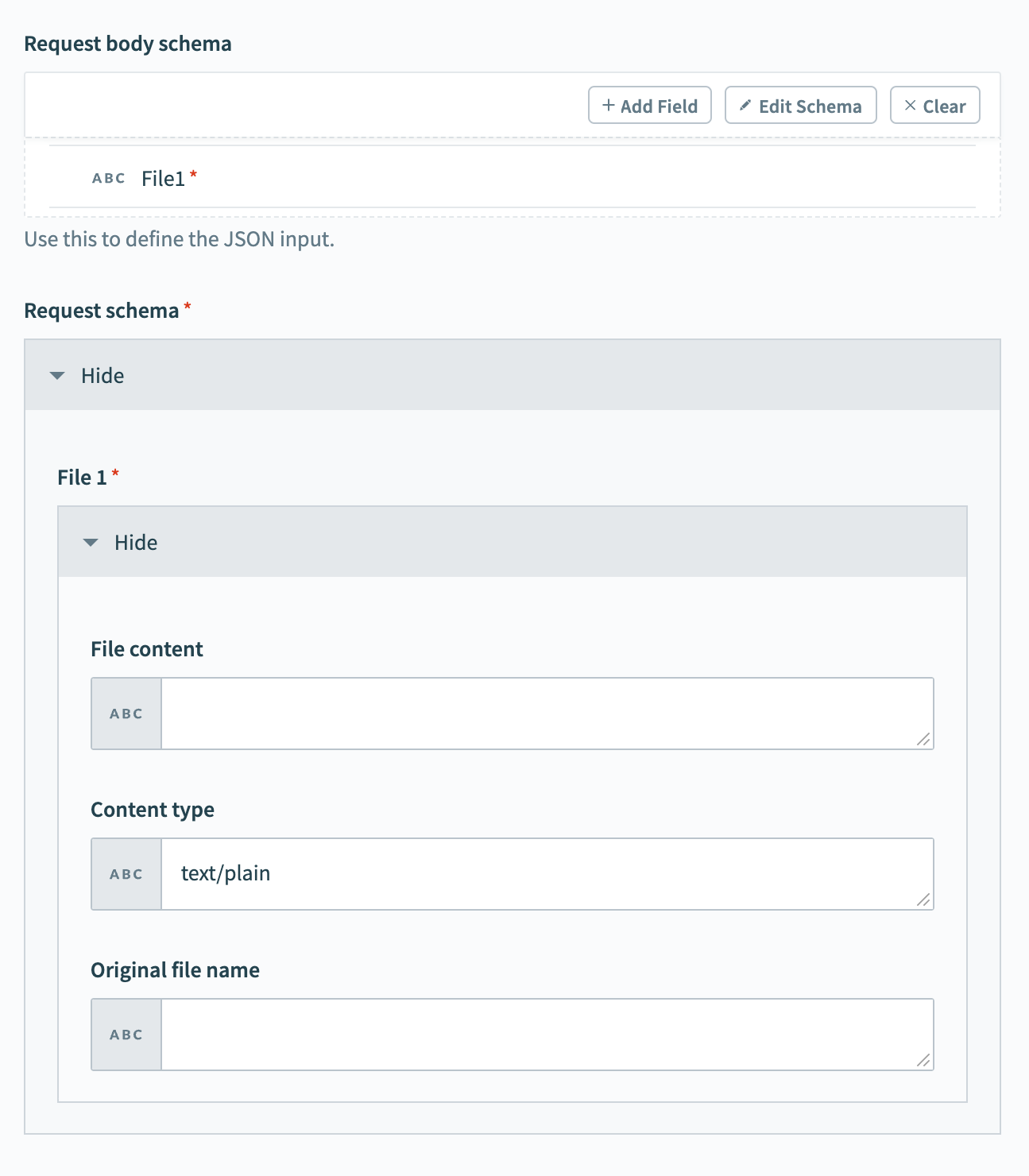 Image caption
Image caption
Click + Add Field and repeat the previous steps to create fields for additional files you plan to send in your multipart request.
# Marking non-2xx response codes as success
By default, Workato's HTTP connector treats non-2xx response codes as errors, causing jobs to stop unless handled. To allow jobs to continue when non-2xx response codes occur, set Mark non-2xx response codes as success to Yes.
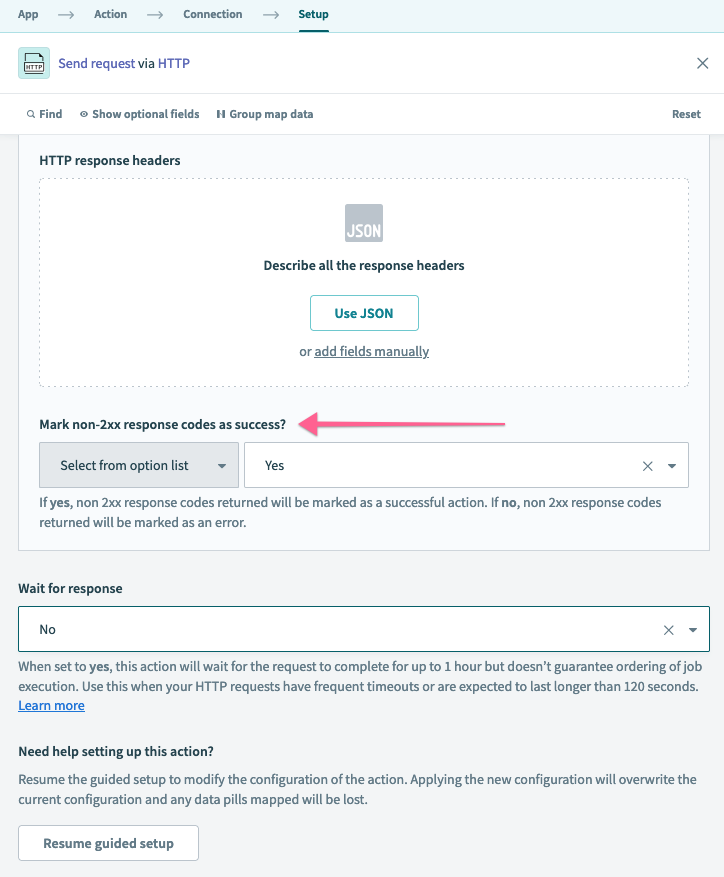 Mark non-2xx response codes as success
Mark non-2xx response codes as success
# Configure HTTP action as a long action
If you know the endpoint takes more than a few seconds to respond, you can designate this HTTP action as a long action by setting the Wait for response field to Yes.
PUBLIC BETA
The Wait for response field in the Send request via HTTP action is a beta feature available to all users of Workato's HTTP connector.
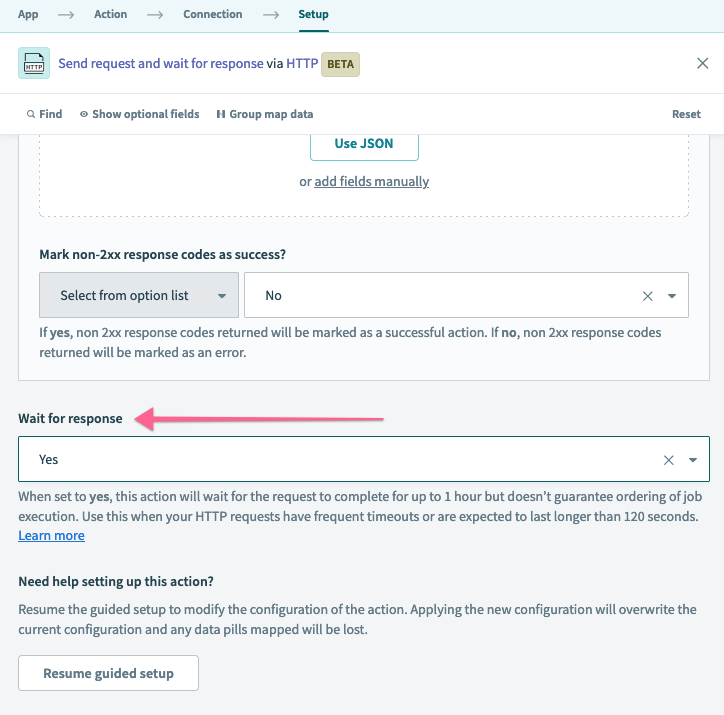 Wait for response
Wait for response
The following table explains the key differences when the Wait for response field is enabled:
| Without "wait for response" | With "wait for response" | |
|---|---|---|
| Request timeout | Up to 120 seconds | Up to 1 hour |
| Response size | Soft response size limit of up to 200 MB | Hard response size limit of 100 MB |
| Connection types | All HTTP connection types are possible | Connections using custom SSL certificates or OPA are not supported |
| Job processing | Jobs in the queue are processed in order | Jobs may not be processed in order |
In most cases, we recommend starting without waiting for response when building. If timeouts occur, you can enable the Wait for response field within the same action after building your initial recipe.
FURTHER READING
Last updated: 10/30/2025, 3:39:26 PM
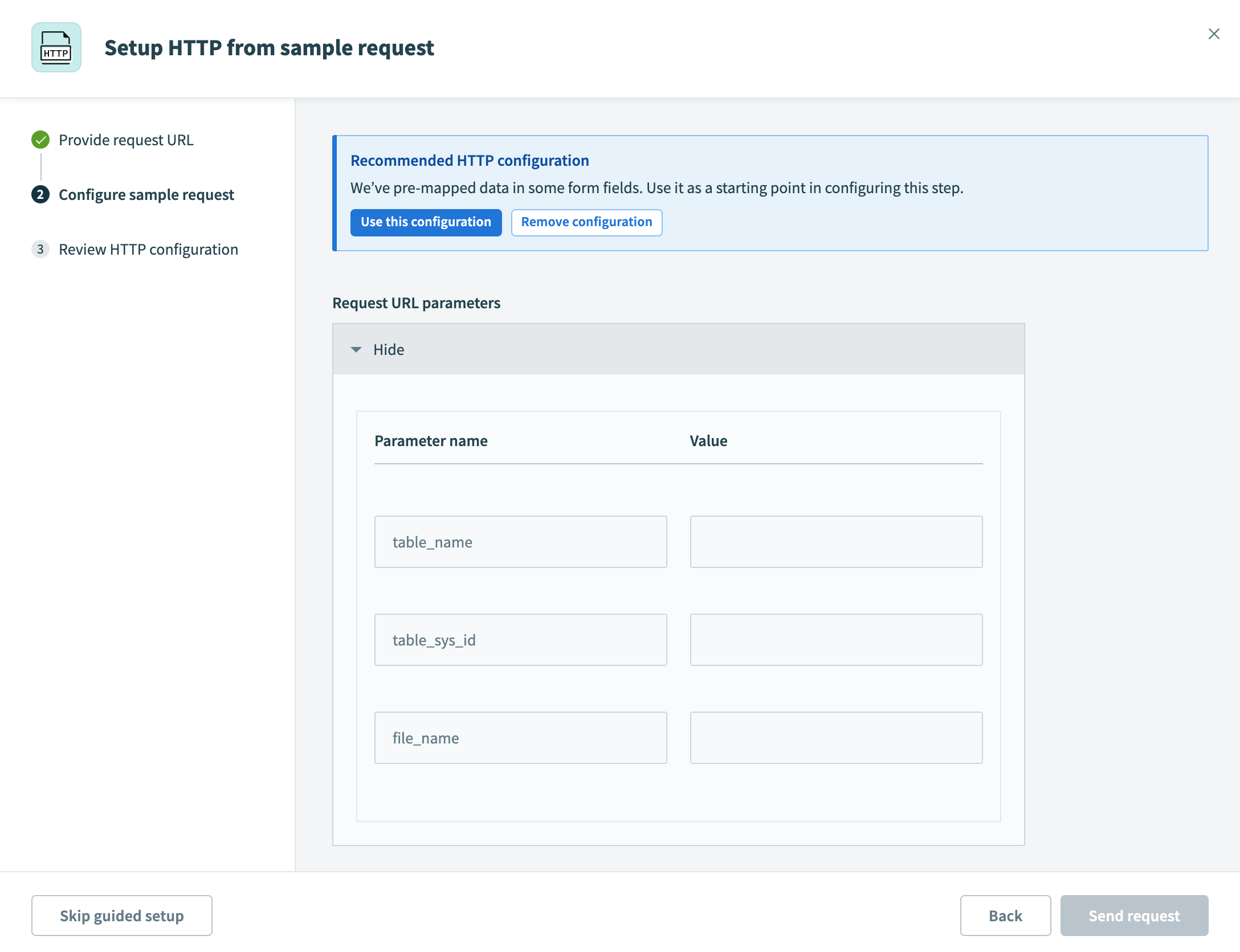 RecipeIQ recommendations for HTTP configuration
RecipeIQ recommendations for HTTP configuration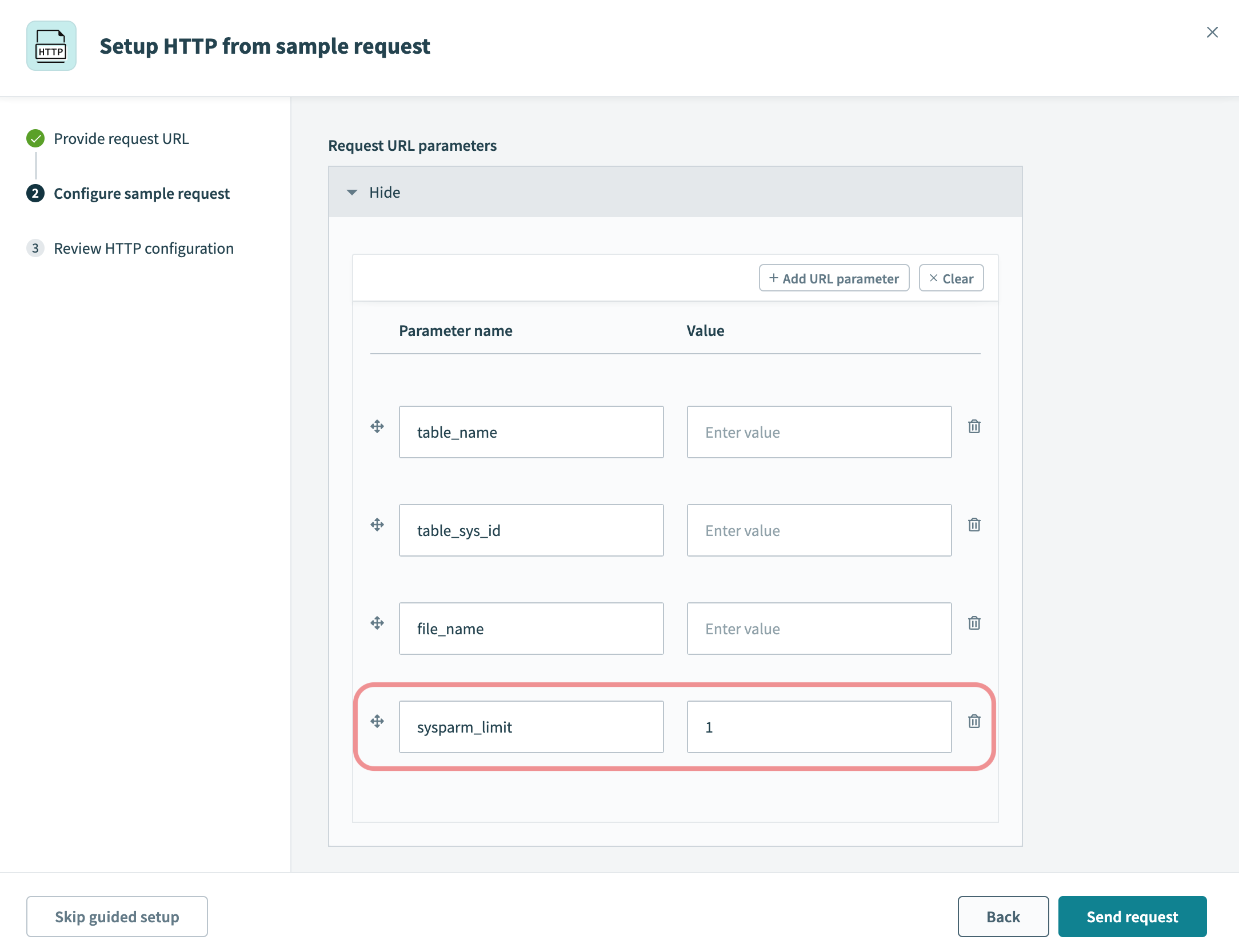 Adding request parameter
Adding request parameter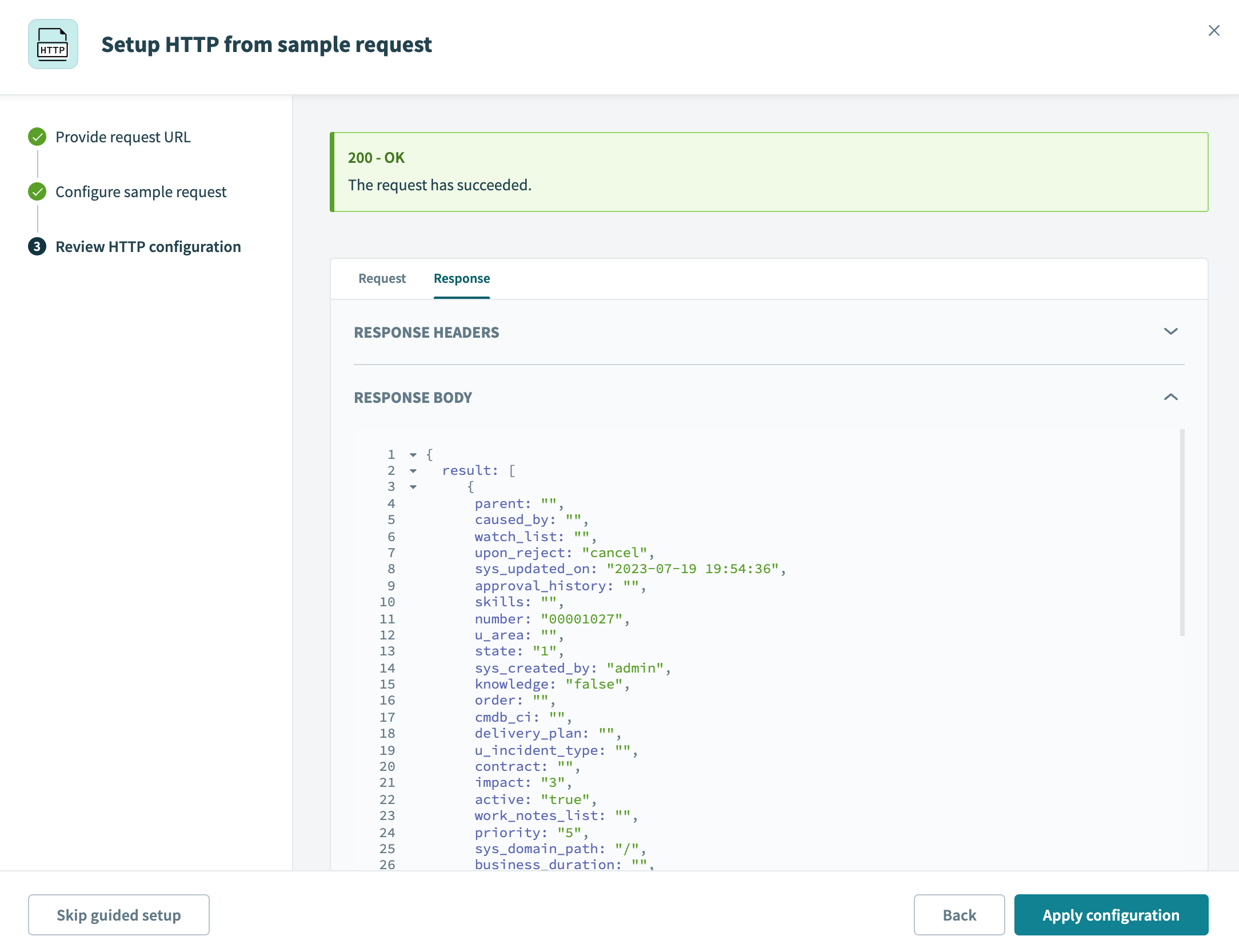 Request successful
Request successful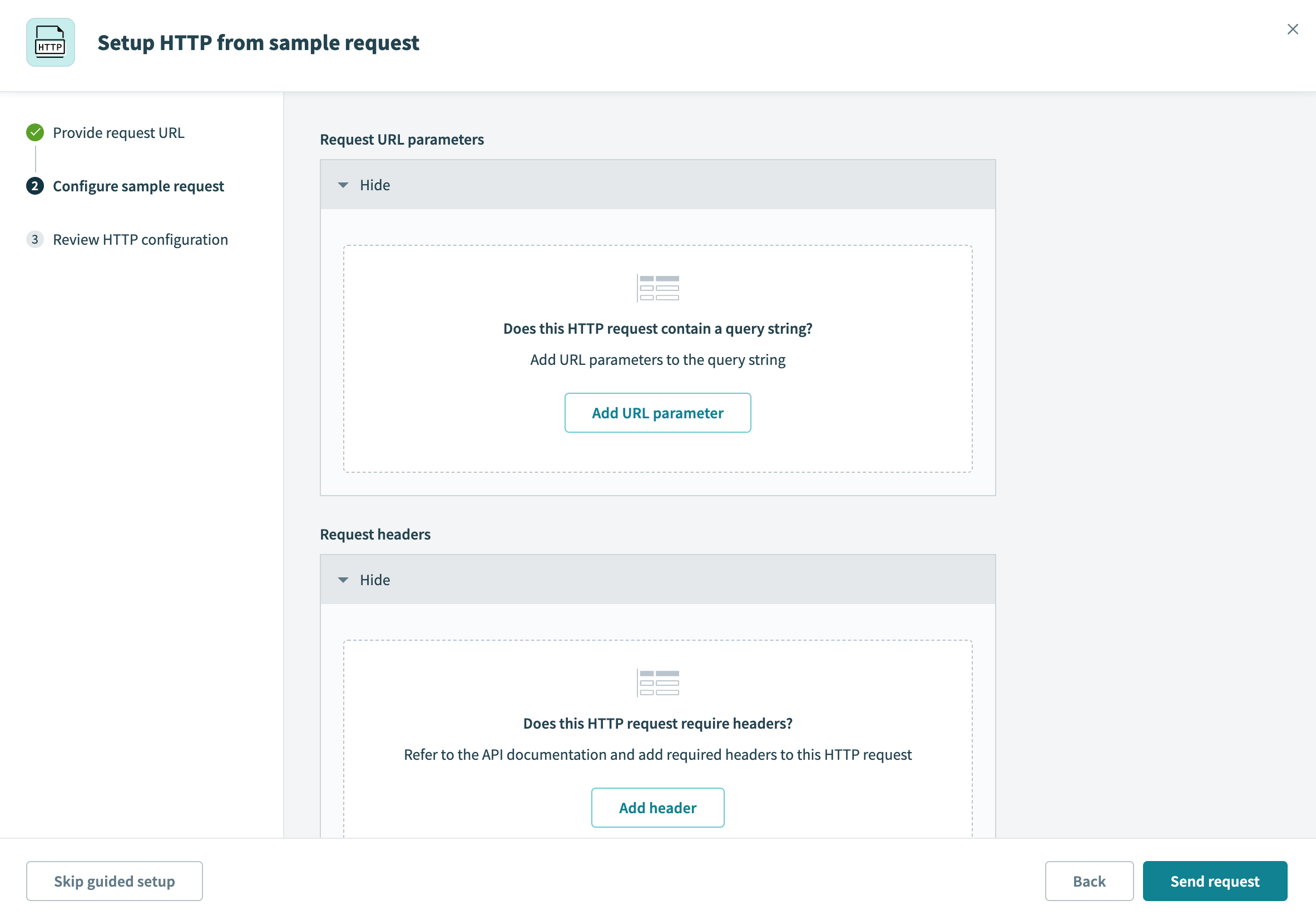 Configure the sample request
Configure the sample request Configured sample request
Configured sample request